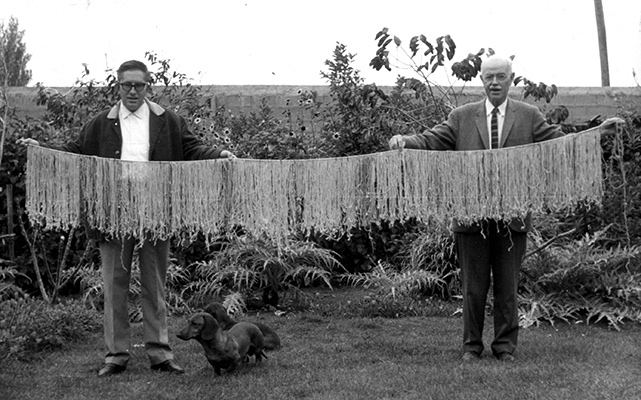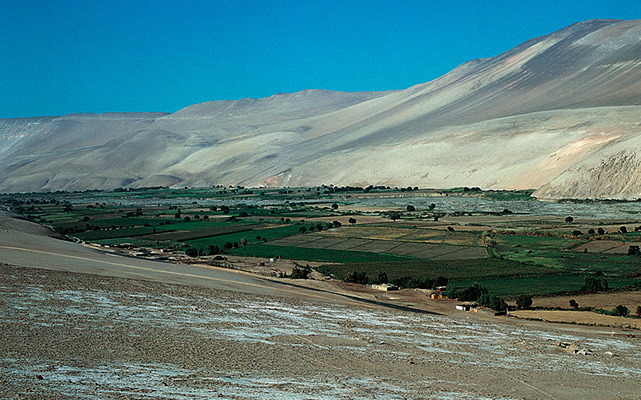Quipu: Counting with knots in the Inka Empire – 2003
- Record-keeping with knots
- The quipu and writing
- Tawantinsuyu , the Inka Empire
- The Quipu, and the needs of an empire
- Quipus and tribute
- Basic parts of a Quipu
- Making a Quipu
- Quipus and numerical values
- Narrative Quipus?
- Los distintos usos del Quipu
- Quipu of Arica
- Quipucamayoc , Lord of the Knots
- Quipus in the colonial era
- Epilogue
- To know more about Quipus
- Crédits and acknowledgements
The quipus and the Inka Empire in Arica
In the mid 15th century, the Inka Empire had annexed to the Collasuyu the Tarapacá Region, Chile’s extreme north, seeking to expand their production territories. The Inkas exploited the full range of economic resources that this region offered, occupying the coast, the valleys, the mountains and the highlands, with production settlements formed by foreign colonies or local population subjects to the Empire. From the rich marine resources of Arica and its surroundings, they obtained guano and dried fish, in the Lluta and Azapa Valleys they have boosted agricultural land cultivating corn and chili, and in the mountains and neighboring highlands they developed camelid raising and growing species as potato and quinoa.
Proof of the size and importance of the Inka domination in the region, is the large number and diversity of settlements they founded, such as administrative centers, storage sites or collqas, rest post or tambos along the Inka Trail and extensive cemeteries. In the Inka cemeteries from Mollepampa, in the LLuta Valley, and Playa Miller, at the coast of Arica, they have been recorded many quipus, among them two of the most complex and extensive so far found in the Tawantinsuyu. Unfortunately, most of them are known by serendipity or looting of many Inka sites in the region, and this has greatly hampered their study. Only recently have been recovered the first quipu remains in archaeological excavations at Mollepampa, coming from an Inka tomb in this administrative center.
So far, the Arica region has the largest record of quipus around the Collasuyu Inka province, besides being the southernmost place of the Imperial territory where they are found. To the north, Chachapoyas, in the north-central highlands of Peru, meant as the northern limit of this evidence.





































